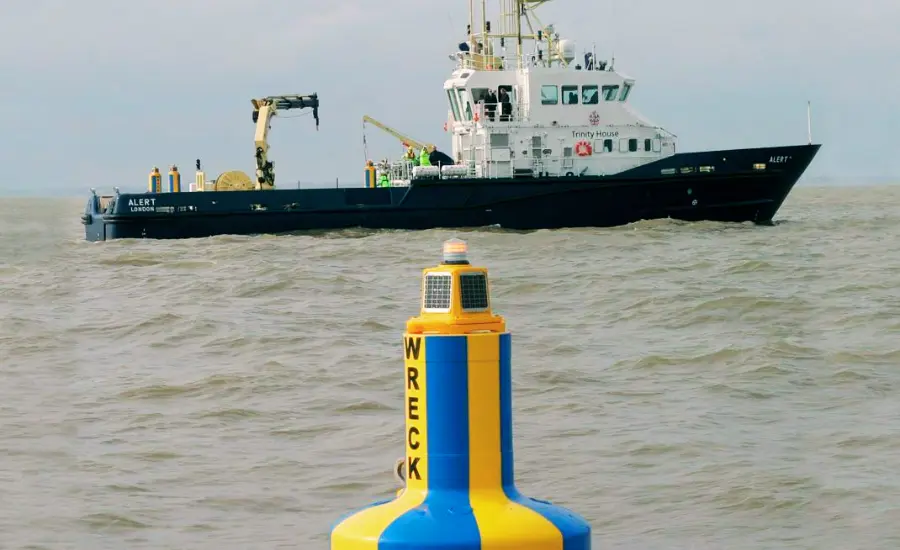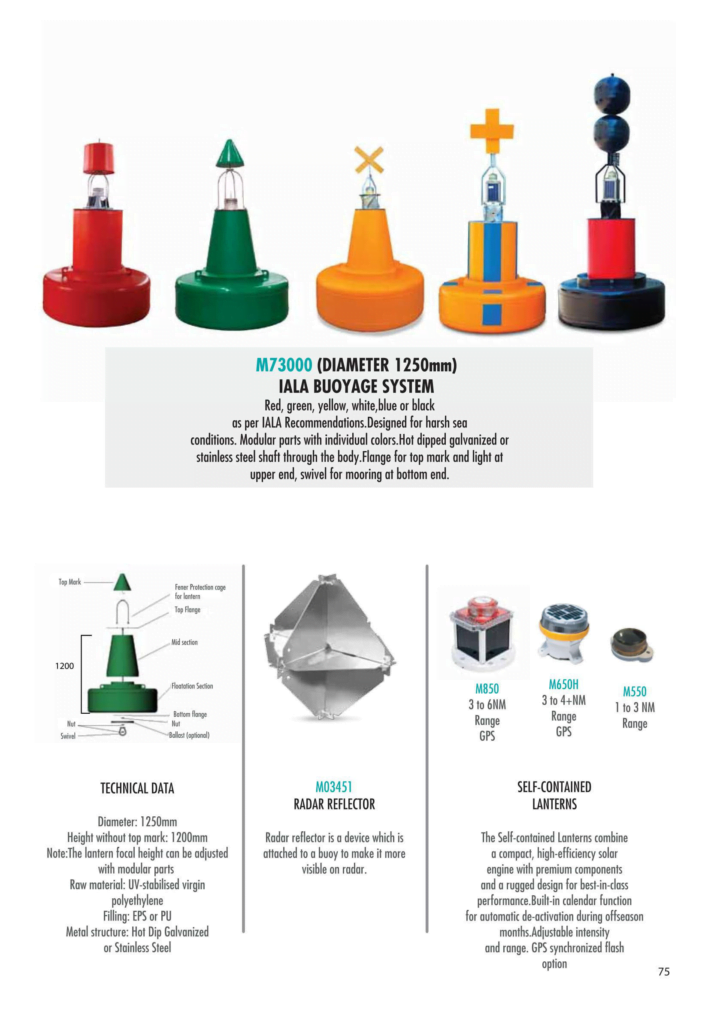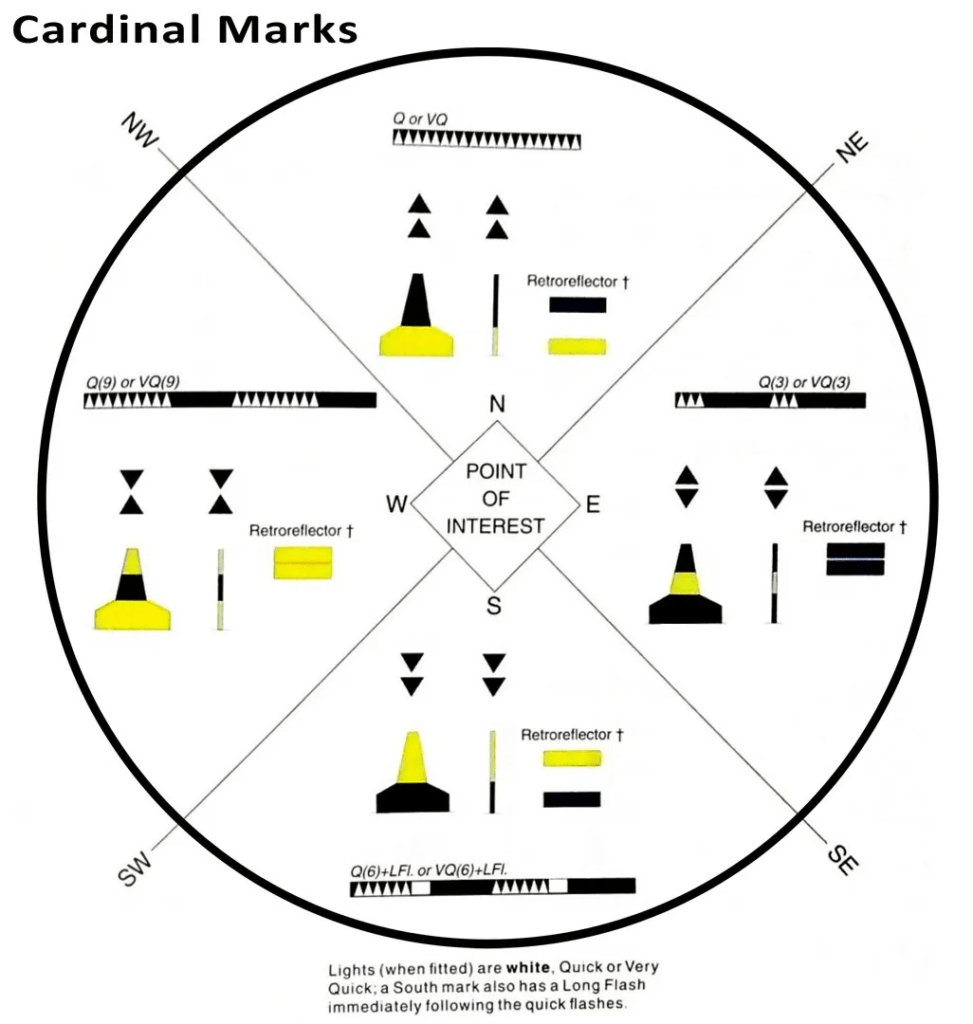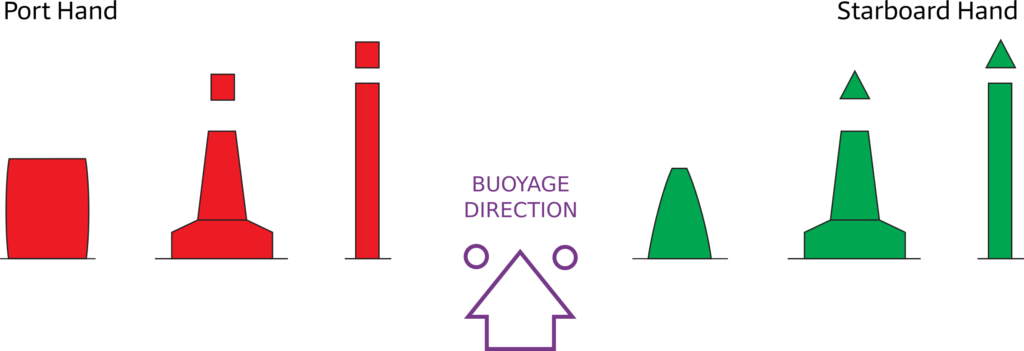
Traffic lights and signs guide drivers on the road. Emergency wreck Mark buoy, beacons, and navigation lights function similarly on the water.
IALA Buoyancy System

The system of wreck mark buoy, beacons, beacons, and lights used in Queensland complies with the International Maritime Navigation and Lighthouse Association (IALA) Buoyancy System ‘A.’ Each type of marker has its own color, shape, top marker, and light combination. To navigate safely, you need to know all the markers and their meanings.
Side Marks

Side Marks indicate the port (left) and starboard (right) sides of navigable waters or canals. With a red can-shaped port mark. Example of side harbor markings in daylight. At night, a buoy in the harbor flashes red (when lit). An example of the port side mark at night is the starboard mark, which is a green conical. Example of daytime starboard side marker.
At night, the starboard wreck mark buoy shows a green light (when lit). Example of starboard side mark at night: If the port side mark and starboard side mark are facing each other, please pass between them. However, they may not be paired. If she has one side marker, whether she can pass on the safe side depends on her direction of travel (or buoyancy). The direction of emphasis is indicated on the map by the following symbol:
Directional Arrow Graphic on the Map

If moving upstream or away from the sea, Port marker (red). Place it on the port side (left). Please maintain the starboard mark (green) on the starboard (right side) side. If heading downstream or out to sea: Turn the port (red) mark to your starboard (right) side. Place the starboard sign (green) on the port (left) side.
Cardinal Mark Features

The Cardinal wreck mark buoy uses a compass to indicate the location of the deepest and safest waters. You can mark the following: Where the deepest water is in an area, the Safe side for passing through a hazard, A feature within a channel (e.g., a bend, intersection, or edge of a shoal). The cardinal signs have black and yellow stripes with a black double cone at the top to indicate various cardinal directions and the safest and deepest waters to travel. At night, each type of cardinal flashes white in different flash groups (sequential or groups of 3, 6, or 9). To remember each type, imagine a compass face with clock numbers engraved next to each direction (north, east, south, west).
North Cardinal Marker
North emergency wreck marking buoy indicates that there is safe water north of the marker. The upper cone faces upward or north. North direction example in daylight. At night, the white light flashes rapidly or very quickly continuously.
East Cardinal Mark
The East Cardinal Mark indicates that there is safe water to the east of the mark.The upper cone is egg-shaped. To remember this, remember the egg and the “e” in, which stands for east. For example, looking east in daylight. At night, the white light flashes quickly or very quickly, three times every 5 or 10 seconds.
South Cardinal Mark
The South Cardinal Mark indicates that there is safe water south of the mark. The upper cone faces downward or south. For example, looking south in sunlight. At night, the white light flashes quickly or very quickly six times, followed by a long flash every 10 or 15 seconds.
Western cardinal mark
The western cardinal mark indicates that there is safe water to the west of the mark. The cone at the top is shaped like a wine glass. To remember this, think of him with a wine glass and a “w” in the west. Example: westward in daylight. At night, the white light flashes quickly or very fast, nine times every 10 or 15 seconds.
Isolated Hazard
The Marker Isolated Hazard stands surrounded by navigable water, providing a clear indication of potential dangers such as isolated shoals, rocks, and shipwrecks. However, it also serves as a warning, ensuring that vessels cannot approach the isolated hazard too closely. Indicates the location. Individual danger signs are black with one or more red horizontal stripes and two balls as the top sign. At night, two white lights flash on and off. To remember the individual hazard markers, imagine his two flushes with his two balls as the top markers.
Daytime Isolated
A emergency wreck marking buoy indicates that there is navigable water around the marker. For example, fairways, center channels, or landing markings. The safe watermark has vertical red and white stripes with a single red ball as the top mark. At night, a single white light flashes for a long time every 10 seconds. To remember the safe watermark, think of one light and one long flash and his one ball at the top mark.
Special Characteristics Of Marks

Special marks indicate special areas or special characteristics. For example, to indicate that channels are split or to mark cables and pipes. You can also mark channels within channels. In deep-draft shipping channels of wide rivers and bays, red and green side buoys or beacons delineate the boundaries of the channel to facilitate normal navigation. These markers guide vessels on the correct path, and their direction of travel is typically indicated on maps, ensuring safe and efficient passage through the waterway.”
Special characters are yellow and may begin with a yellow X. Yellow light flashes at night. Example of daytime special marking Example of nighttime special marking Wreck emergency marking buoy Wreck emergency marking buoy is used to mark new hazards and shipwrecks. It has blue and yellow vertical stripes and is shaped like a pillar with a yellow cross at the top. At night, 1 second of blue light and 1 second of yellow light flash alternately, with 0Five seconds of darkness in between.
New Hazard Markings
Other Navigation Aids There are several other navigation aids that you should be aware of. Lead Leading lights/beacons are typically triangular in shape. The tip of the front line points upwards, and the tip of the posterior line points downwards. “When the lines align, navigate to the center of the channel. If a line designates the center of a sizable canal, smaller vessels should actively choose the starboard side, maintaining a safe distance from larger vessels—especially crucial during nighttime operations. Use a fixed white daylight to mark the lines during the day, while blue lights typically illuminate the main lines at night.
Blue Center Channel Marker
The Blue Center Channel Marker is a blue light that indicates the center of the channel for vessels passing under the bridge. It usually appears on a map as a star with a lightning bolt symbol.
Directional and Sector Lights

Directional and sector lights serve a purpose analogous to directional lights in waterway entrances and coastal waters. These lights, often utilized as steering markers, feature sector lights that display distinct colors, typically green, white, and red. A notable example is the Harbor Signal, equipped with three red vertical flashing lights remotely controlled by the Queensland Coast Guard’s Vessel Traffic Service. This specialized lighting is instrumental in identifying and guiding large commercial vessels navigating through harbors, marinas, or other narrow waterways. Alert others in the area that you are moving. When the harbor light is flashing, vessels are not allowed to enter or leave the port or port area.










